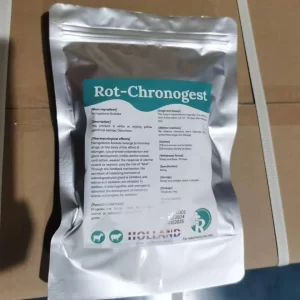
Rottermectin Paste
Contains per g:
Ivermectin…………………. 18.7 mg.
Carriers ad…………………. 1 g.
The following parasites of horses are sensitive to the antiparasitic effects of Intermectin Paste:
– Large strongyles: Strongylus vulgaris (adults and arterial larval stages), S. edentatus (adults
& tissue larval stages), S. equinus (adults), Craterostomum acuticaudatum (adults) and
Triodontophorus spp. (adults).
– Small Strongyles: Adult and immature (fourth stage larvae) small strongyles or cyathostomes,
including benzimidazole-resistant strains: Gyalocephalus capitatus, Coronocyclus,
Cyathostomum, Cylicocyclus, Cylicostephanus, Parapoteriostomum, Petrovinema and
Poteriostomum spp.
– Lungworms (adult and immatures): Dictyocaulus arnfieldi.
– Pinworms (adult and immatures): Oxyuris equi.
– Ascarids (adults and third & fourth stage larvae): Parascaris equorum.
– Hairworms (adults): Trichostrongylus axei.
– Large-mouth stomach worms (adults): Habronema muscae.
– Neck threadworms (microfilariae): Onchocerca spp.
– Intestinal threadworms (adults): Strongyloides westeri.
– Stomach bots: Oral and gastric stages of Gastrophilus spp.
Do not use in animals with known hypersensitivity to the active ingredient.
Do not use in mares producing milk for human consumption.
Rottermectin Paste is administered orally at the recommended dose rate of 0.2 mg/kg bodyweight.
Each applicator, containing 6.42 g of paste, delivers 120 mg ivermectin, which is sufficient to
treat 600 kg of bodyweight.
Make sure the horse’s mouth contains no feed. Insert the syringe into the horse’s mouth at the
interdental space. Deposit the medication on the base of the tongue. Lift up the horse’s head for
a few seconds immediately after application.
and pruritus after administration, probably caused by the death of large numbers of microfilariae.
These signs resolve within a few days, but symptomatic treatment may be recommendable.
delivers 120 mg ivermectin (18.7 mg/g).

